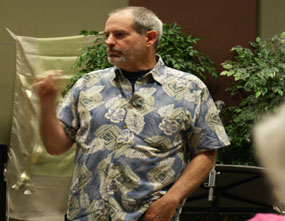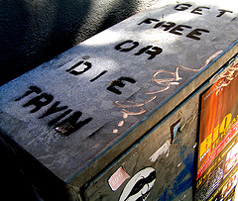I’m in residence at MusiCalifornia this week, and so some of these posts are “pre-written.” I’ll be back toward the end of the week…
In the next issue of Creator magazine (www.creatormagazine.com), our theme is a discussion with nine music publishers. Here’s a taste of what’s coming with our final four publishers speaking…
MK= Mary Kaufman of Oxford University Press
ML= Mark Lawson of MorningStar Music
RVN= Roberta Van Ness of Hinshaw
SB=Stephen Bock of Fred Bock Music
How has the church market changed in the past 25 years?
We asked whether the publishers thought there had been drastic changes in church music and church music publishing, and how they have responded to any such changes.
RVN: The most dramatic change in church music publishing, I feel, is the increase in the number of music publishing companies, particularly within the last 15 years. Also, the change in styles of church music has broadened the market in general. The advent of computer engraving and the ease of internet selling has made it much easier to produce and sell choral music, thus making this opportunity available to more people. Just as the computer has changed the face of music publishing, it has also changed the way we market. I have seen the slow decline of live music workshops, and the increase of internet promotion including podcasts, and email newsletters. We have definitely started to take advantage of marketing opportunities available on the internet.
MK: I think the biggest change in sacred music is the style of church music. With the advent of rock and urban music, both composers and publishers are trying to make the music fit the situation. Pastors see congregations shrinking and look to music as one way of building a new base of young people. OUP has responded to this by embracing music with new and interesting rhythms and varying instrumental accompaniments. A great example of this is Bob Chilcott’s Where Riches Everlastingly – a Christmas carol with syncopated rumba rhythms and percussion.
I think the print-on-demand side of the industry is also one of the greatest changes and challenges. Many publishers are in a transitional phase and are trying to balance which titles to have on-hand with what titles to select for print-on-demand service. Keeping an overabundance of stock on warehouse shelves is not a good thing, and with the advent of computers more and more are going to a print-on-demand type operation – order placed, order printed, order shipped. In this situation, OUP is trying to do what is best for its customers to make sure stock is available when it is needed while also balancing the costs of printing and keeping stock.
ML: There are three areas that immediately come to mind. The first is the diversity of musical styles that are often present within one congregation. Many churches have multiple services that include different styles of worship and music, yet you rarely see publishers who have been able to successfully publish all of these different styles. This creates interesting marketing challenges for publishers because you can no longer assume that a certain church only does one style of music.
Another area of change has been in the way musicians look for and buy their music. Even though we are still somewhat seasonal in buying patterns, with late summer/early Fall and January/February being by far the busiest of buying times, you can see that web-sites have created a system whereby musicians can look for music all year round and are not as dependent on direct mailings as they once were. It is also much easier for musicians to find older titles in publishers’ catalogs that might fit their needs rather than being dependent on only newer publications.
The third area of major impact is the influx of instrumentalists that has appeared in churches over the past 10-15 years. Many churches are using creative combinations of instruments, and seem to have a number of talented instrumentalists on which to call. There also seems to be a growing interest in quality materials for instrumentalists in both accompaniments and stand-alone ensemble pieces.
SB: The easy answer for the most drastic change for FBMC, as far as I’m concerned, is that I’m even in it. As many people know, I was working in the film and television business when my dad died in 1998. If you had asked me 20 years ago what I’d be doing for the rest of my life, running Fred Bock Music Company would not have made the list. However, you didn’t ask that question.
I think that there are two answers to this question: CCLI and technology. CCLI has done more to change how churches use music, what music they use, how much money they spend on music, and, therefore, logically, what publishers prioritize in their decision-making process. Paul Baloche and Tommy Walker would probably still be leading worship in a local church without CCLI, but I don’t think it’s a stretch to say that anyone outside of those churches would know who they were. And, on top of that, they – and most of the other full-time worship leaders out there – would probably have other day jobs. CCLI allowed the entire Praise and Worship movement to happen and develop the way we know it now. The other big sea-change that CCLI created was the growth of local church musicians being able to (and encouraged financially to) write and introduce new songs to their congregations. In a pre-CCLI world, the publishers were the gate-keepers and the arbiters of taste and appropriateness. Once CCLI came on the scene, local church musicians now had an outlet that accepted their music and paid them a royalty whenever it was used.
Now, I know what some of you are saying – and I don’t completely disagree with you: “All those guys do is program their own music in their own church and collect the CCLI money for it. That music never gets past that worship leader’s home church.” In many cases, you are correct. But, in many cases there have been songs that have moved into the public’s awareness that started from worship leaders in a small church. Having CCLI around allowed a song like Open the Eyes of My Heart to happen.
The second big change, technology, is in some ways a big cop-out on my part. Technology always is a catalyst for change. I can just imagine the fights that went on at the first church that put in a pipe organ all those centuries ago! And where would we be now if someone hadn’t thought to augment Mr. Guttenberg’s little invention and put together a printed collection of hymns? The same can be said for electricity that powers lights and sound equipment, and for radio and television that allow mass communication. So, on the surface, saying “technology” is a bit of a cheat. However, there are some technological changes that have happened (and continue to unfold before our eyes) that are fundamentally going to change how the church music business exists in the coming generation or two.
The Digital Revolution has seen us go from vinyl, to cassettes, to CDs, to MP3s – all in 25 years. When was the last time you played a cassette tape? In fifteen years, our kids (or grandkids) are going to be asking what it was like to go to a store and buy a CD. In fact, they are going to be asking what it was like to go to the store to purchase any kind of music. Twenty-five years ago, many church musicians purchased their music through Church Bookstores (CBA). Little mom-and-pop CBA stores dotted the country from the Atlantic to the Pacific. Now, a frightful number of those stores are gone and the CBA market is a shell of what it used to be. Likewise, the traditional music dealers (non-CBA) are seeing a similar shake-out that could lead to a tremendous reduction in the number of stores in the US and Canada. All the while, internet sales of music are shooting through the roof – and that will only increase as new, safe, and reliable means of digital delivery that allow the customer to purchase and download music directly on their desktop (or laptop, or PDA, or phone) come on-line.
Additionally, this Digital Age is forcing churches (and by extension, church musicians and publishers) to rethink the idea of “parish.” It used to be that a congregation was a collection or people who attended their local church, because that was where they all lived. With the advent of mass transportation, and more specifically the automobile and highways, the concept of the “commuter church” became an accepted definition for a church’s idea of parish. With the internet and satellites, a church’s parish could be in Sri Lanka just as easily as the town where the service takes place. That’s a big difference from where we were just a quarter-century ago.












You must log in to post a comment.